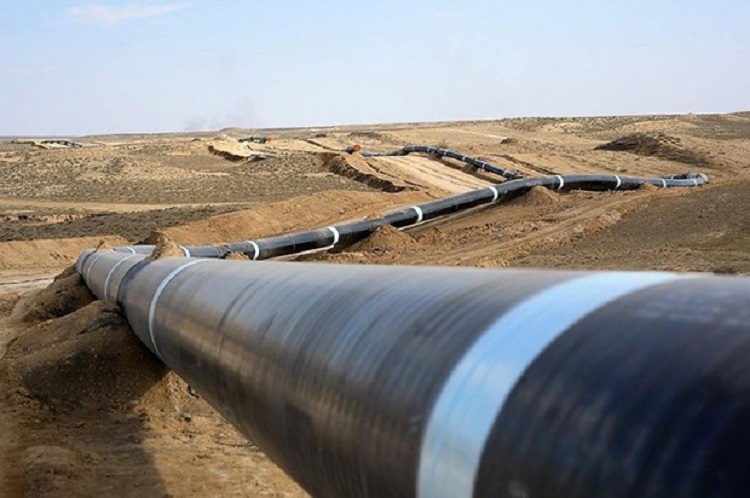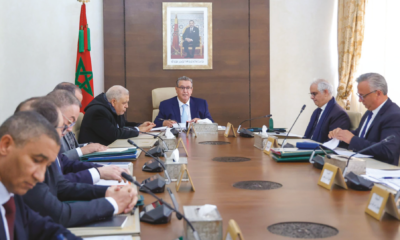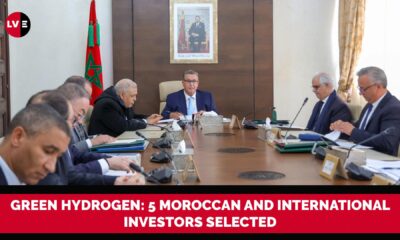International
Africa-Atlantic Gas Pipeline: Beginning of Concrete Implementation of a Regional Integration Project
The initial calls for tenders for the implementation of this mega-project, will be launched in 2025. They cover the first phase involving Morocco, Mauritania, and Senegal. The discussion on a hydrogen pipeline project to be connected to it has begun

What was merely a dream in 2016, a two-state vision – Morocco and Nigeria – for stability and economic emancipation across the West African region, is about to become a reality. The ‘political fantasy’, in the words of our neighbours from the East, is now taking concrete shape.
Calls for tenders for the first phase of the Nigeria-Morocco Gas Pipeline, which recently became the Africa-Atlantic Gas Pipeline, will be launched in early 2025.
Prior to this, in December, and following the recent adoption of the Intergovernmental Agreement (IGA) and Host State Agreement (HSA), revised by the Energy and Hydrocarbons Ministers of the Economic Community of West African States (ECOWAS), expanded to include Morocco and Mauritania, “a signing ceremony for the two agreements between the project’s sixteen members is scheduled to take place at the next ECOWAS summit, to be held in mid-December in Abuja”, reports the generally well-informed Africa Intelligence website.
These sixteen countries are the eleven ECOWAS members involved in the project, in addition to the three countries of the Alliance of Sahel States (Mali, Burkina Faso and Niger), plus Mauritania and Morocco. The signing marks the start of the project’s implementation phase. The two agreements will establish the framework governing relations between the future company entrusted for the project and the pipeline’s host governments, as well as relations between the countries through which the pipeline will run.
According to Onhym, the first call for tenders to be launched in 2025 will concern the first phase of this energy megaproject. This will involve Morocco, Mauritania and Senegal.
The three countries are expected to sign additional agreements for gas transport by next year. At the same time, Onhym intends to set up a dedicated entity to manage the construction, operation and maintenance of this infrastructure.
Energy for the future
While the project was under study, the gas pipeline, including 1,672 kilometers of route in Morocco, will connect with the Maghreb-Europe Gas Pipeline, as well as with the European gas network, through Spain.
In addition to contributing to the economic integration of the African countries concerned, the project meets several strategic objectives. The first, naturally, is to monetize Nigeria’s vast natural gas reserves and diversify the country’s gas export routes, while reducing gas flaring and, beyond that, strengthening the decarbonization of the country’s economy and that of the continent at large.
The project also aims to supply ECOWAS countries, Morocco and Europe with a sustainable source of energy. The future pipeline, with an annual capacity of 30 to 40 billion cubic meters of gas, will provide energy to nearly 400 million people throughout 16 countries, and export 18 billion m3 of gas to Europe every year.
Furthermore, as part of the development of non-conventional energies in Morocco, particularly green hydrogen, Onhym had raised the possibility of technically adapting the section of the pipeline that passes through the Kingdom so it could also be fitted out for transporting green hydrogen. There is, in fact, on-going discussions on building a green hydrogen pipeline between Morocco and Europe, with the support of France.
This hydrogen pipeline will transport gas from Dakhla to the European Union across the entire Atlantic ridge, via the Maghreb-Europe Gas Pipeline (GME). The EU is currently building a 40,000 km network of green hydrogen pipelines, as part of the European Hydrogen Backbone initiative.
This project brings together 32 energy infrastructure operators and officially includes a connection of Morocco to this network via the GME. Another similarly ambitious project, supported by Italy, entails the construction of a gas pipeline linking the country to Morocco.
Earlier this year, the Italian government approved the launch of a feasibility study for this project, which is intended to supply Italy and a number of Central and Eastern European countries with green hydrogen produced in Morocco.
A three-phase project
The Africa-Atlantic Pipeline will be made up of 12 compressor stations. The project will be rolled out in three phases. The first involves extending the WAGP pipeline, which links Nigeria, Benin, Togo and Ghana to the Ivory Coast, connecting it to Senegal, Mauritania, and then to Morocco and Europe.
It should be noted that the joint gas field between Senegal and Mauritania, Grande Tortue Ahmeyim (GTA), went into production effectively before the year’s end. Senegal is expecting its first cubic metre in the next few days. The first export of liquefied natural gas (LNG) from the project will take place in early 2025.
The construction phase of the gas pipeline, which is the subject of calls for tenders to be issued later this year, concerns precisely this field, worth an estimated 900 billion cubic metres, shared between Senegal and Mauritania.
Essentially, during the second phase of the project’s construction, eastern Nigeria will be connected to the Nigeria-Morocco gas pipeline. In the third phase, phases one and two will be interconnected.













